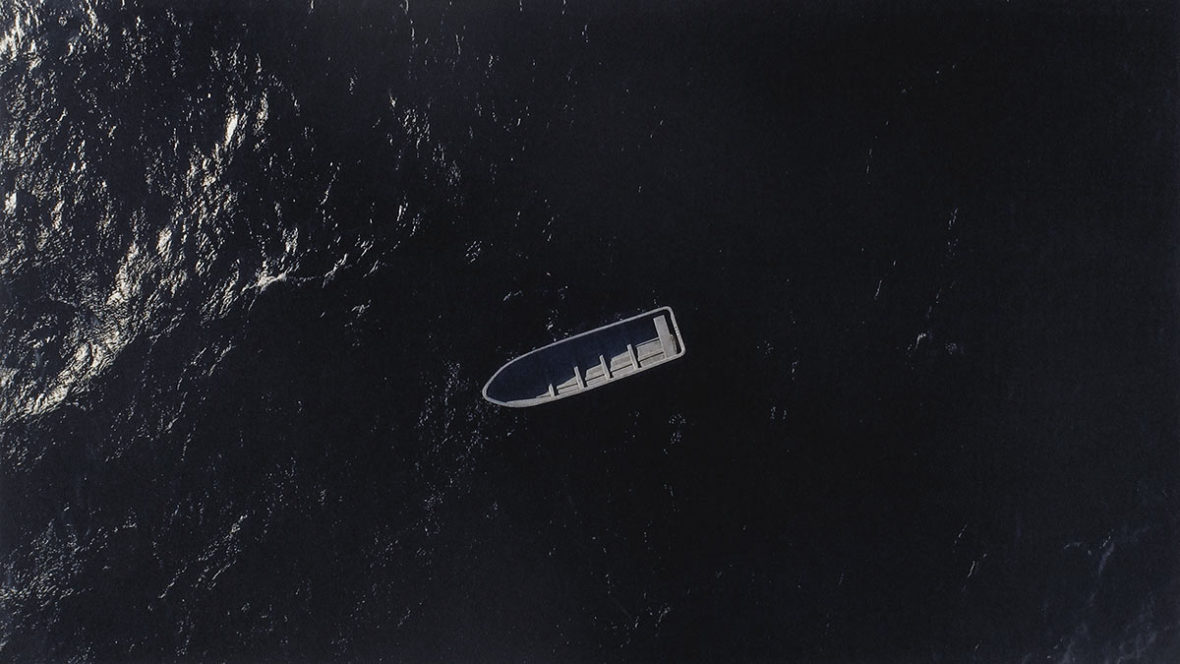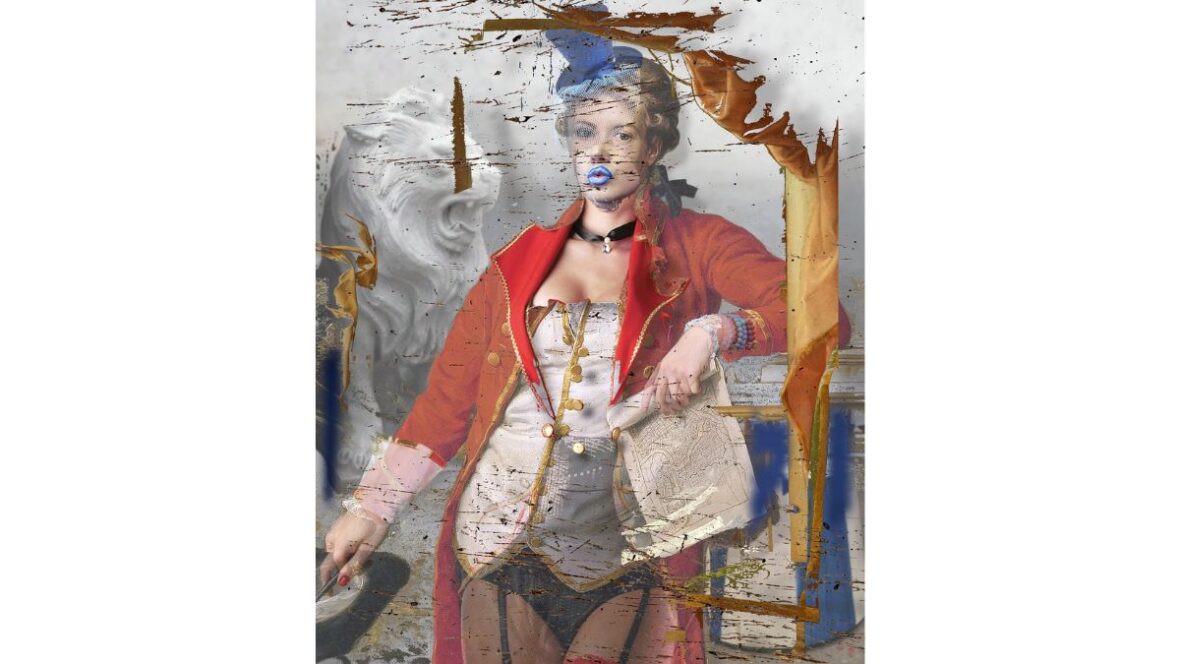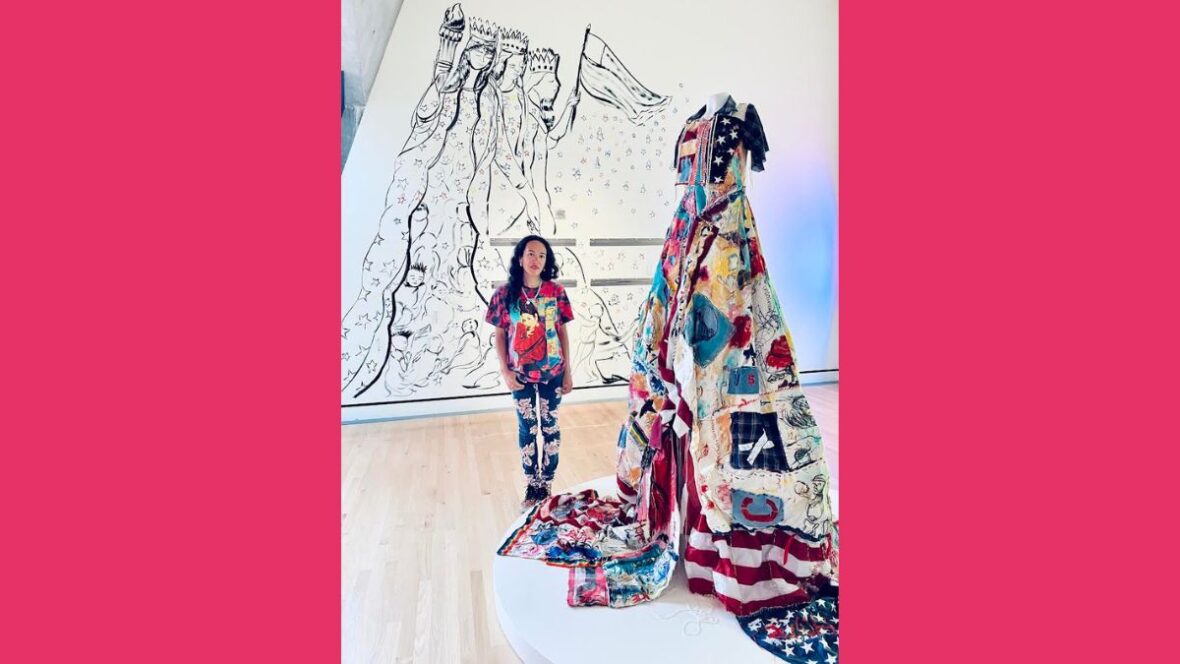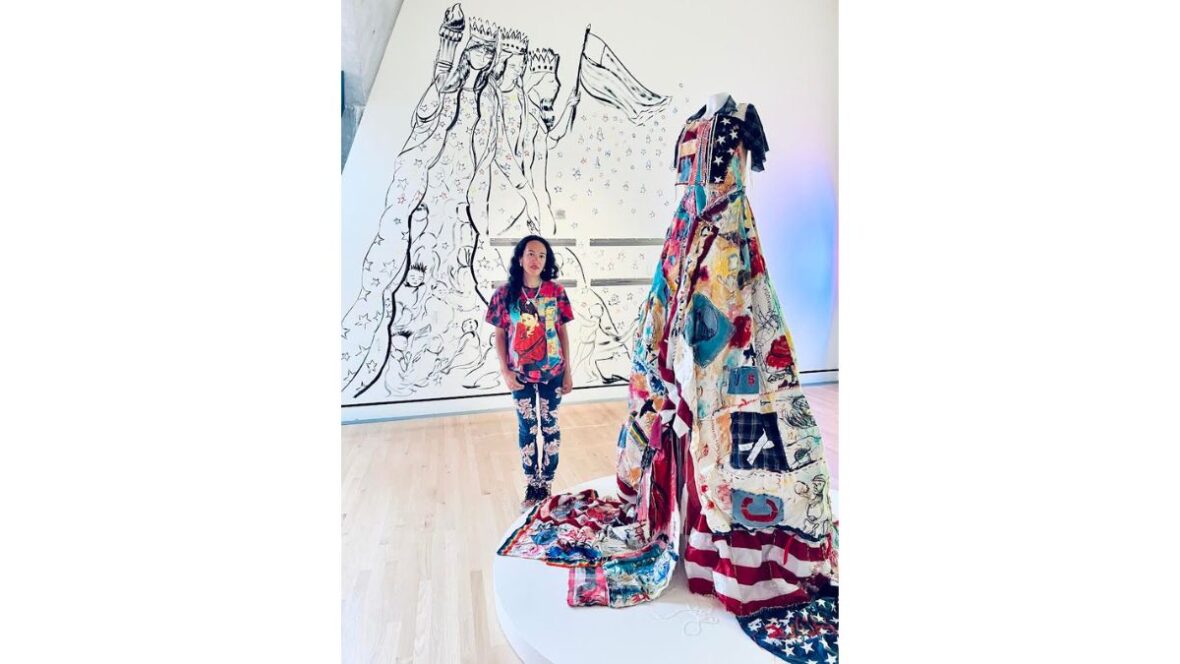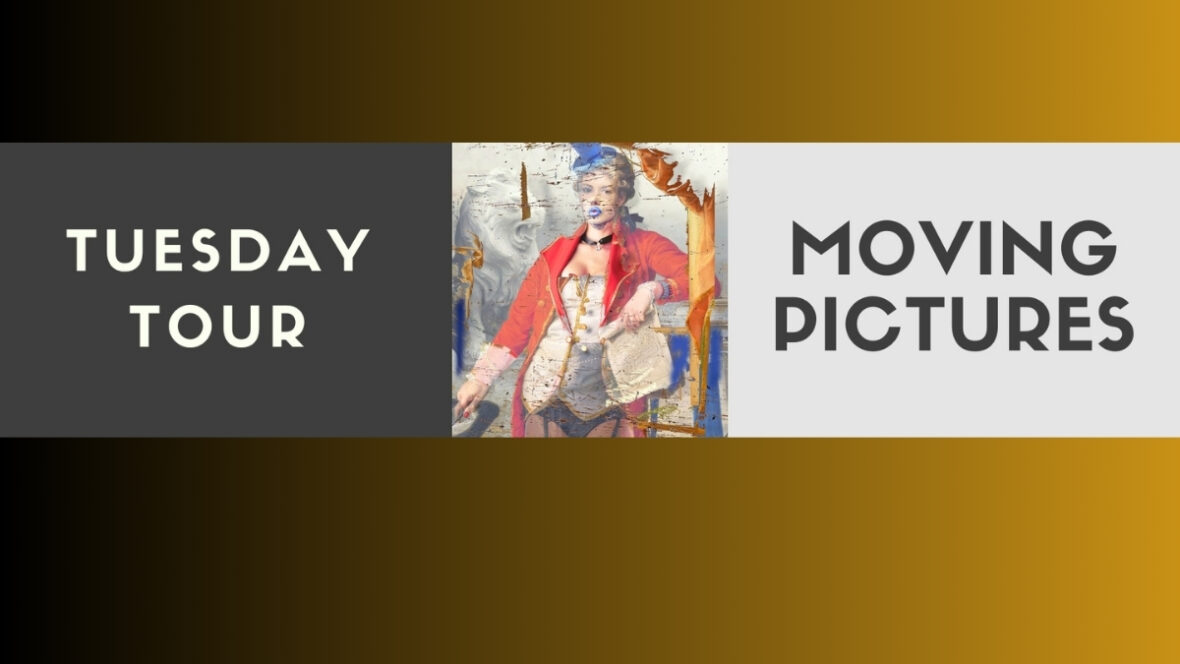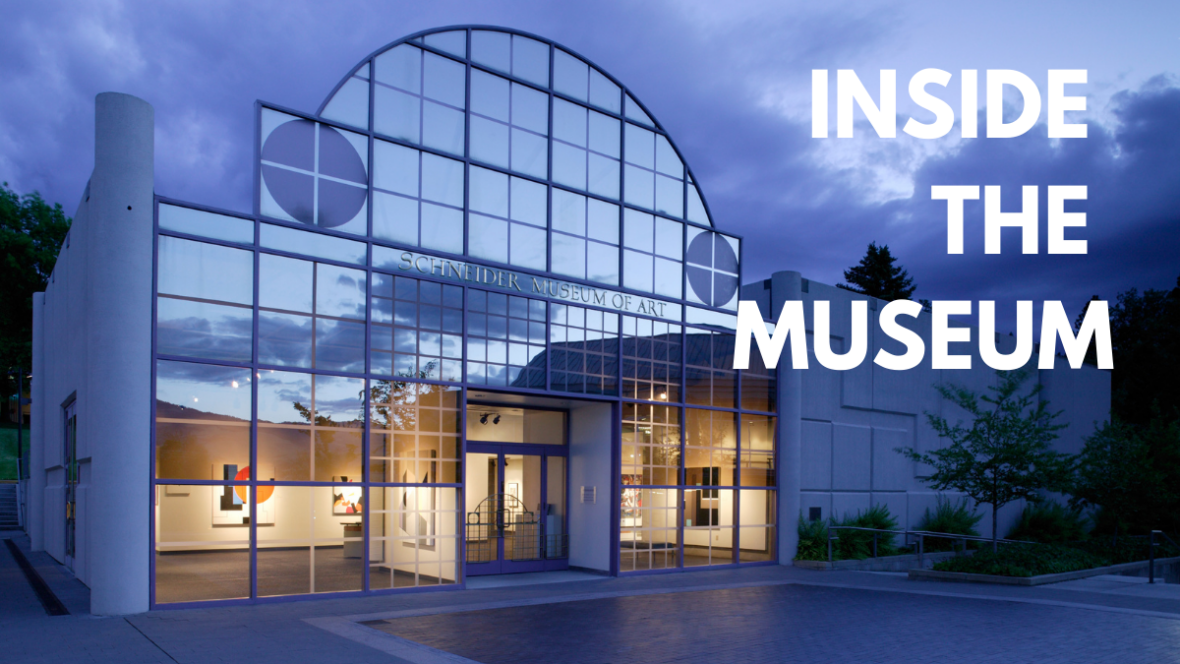Migrating Bodies: For(saking) Life, Liberty, and the Pursuit of Happiness
Curatorial Statement
Migrating Bodies: For(saking) Life, Liberty, and the Pursuit of Happiness, on view at the Schneider Museum of Art August 6th through October 10th 2020, presents work by five artists or artist collectives that address global migration, its causes and effects. Co-curated by Jill Hartz, former executive director of the Jordan Schnitzer Museum of Art, University of Oregon, Scott Malbaurn, director of the Schneider Museum of Art, and Richard Herskowitz, artistic and executive director of the Ashland Independent Film Festival (AIFF), the exhibition is planned in conjunction with AIFF.
According to the United Nations Refugee Agency’s annual Global Trends Report, released in June 2019, nearly 70.8 million people were displaced at the end of 2018. The causes of displacement and migration – war and violence, famine, climate change, and economy– indeed, the struggle to survive and have a better life, seem unending and are, if anything growing more dire, even as many world leaders see refugees and immigrants as threats to their cultures and pawns in their political strategies. The artists in Migrating Bodies address the subject from both personal and historical perspectives.
Exhibition essay by Jill Hartz:
Humans have always been on the move. From nomads to nation builders, we have sought a better life, however we’ve chosen to define that goal. The causes of migration and displacement– including climate change and its attendant famines, fires, and 500-year floods that are now happening yearly; war; religious persecution; slavery; and commerce– seem unending and are, if anything, growing more dire.
According to the UN Refugee Agency’s annual “Global Trends Report”released in June 2019, nearly 70.8 million people were displaced at the end of 2018, with around 13.6 million newly exiled during the year. The agency reported that developing countries are the most affected. Another organization, the Global Footprint Network, recently reported that the world reached a terrifying milestone: July 29, 2019, was Earth Overshoot Day, “the point each year at which humanity starts to consume the world’s natural resources faster than they can be replenished.”[i]
While many of us hope that current catastrophic global situations will elicit compassion and an outpouring of aid, more often than not, refugees strain local resources, and too many world leaders see them as threats to their cultures and pawns in their political strategies. With the global COVID-19 pandemic, migrant and refugee camps are especially vulnerable.
For the United States, a country whose immigrant populations have defined our nation, a bitter fight is underway: White House-supported forces of bigotry and privilege are launching daily, inhuman attacks on refugees (and citizens) of color and those who support a multiethnic society. We are, ironically, on the precipice of turning into a country from which citizens decide to emigrate.
For the past few years, the Schneider Museum of Art at Southern Oregon University and the Ashland Independent Film Festival have partnered to explore timely issues in film and the visual arts. This year, we take on global migration. The artists in Migrating Bodies:For(saking) Life,Liberty, and the Pursuit of Happiness,address this complex subject from both personal and historical perspectives.
Commissioned by the South African Department of Arts and Culture on the occasion of the 57th International Art Exhibition – la Biennale di Venezia, Passage, a three-channel video piece by Mohau Modisakeng(born 1986, Soweto, South Africa), meditates on slavery’s dismemberment of African identity and its enduring erasure of personal histories. In each of the artwork’s projections, we are confronted with a character – a woman with a hawk perched on her arm, a young man in a Trilby hat, and a woman wrapped in a Basotho blanket. The arched shape of the boat frames each passenger with their heads pointed toward the prow; each travels with a single possession. As the passengers lie motionless on their backs looking up at the sky, they perform a series of actions that move between gestures of struggle and resignation. The rising water gradually floods the well of the boat, eventually leaving the passengers submerged while the boat slowly sinks and eventually disappears.
In Setswana, the experience of life is referred to as a “passage.” The Setswana word for life, botshelo, means “to cross over,” and all human beings are referred to as bafeti (voyagers), a word that points to the fact that the experience of life is transient; it has a beginning and an end, as with any voyage. In Passage, the ebb and flow of water, as both life giving and deadly, symbolizes the many who have arrived or departed from South Africa in trade, as cargo or as transient bodies belonging to no particular state.
Water as a metaphor for the passage of life gains immediacy in the multiple monitor installation FLIGHT(2019)by Deborah Oropallo(born 1954, American) and Andy Rappaport(born 1957, American). Boats again perform the passage and can be nearly anything that can float with far too many on board. As they approach land, the multitude gets personalized as faces come into focus, revealing expressions of courage, desperation, fear, loss, and hope. Oropallo is a skilled researcher and image-catcher of global migration and climate change; here, she uses a range of tools–photomontage, computer editing, print techniques, and paint–to create these composite moving images to produce a dense interplay between time, place, form, and content. The original score by Andy Rappaport adds a poignant and meditative layer to this overwhelming picture of global distress.
Perhaps to help relieve the onslaught of images and give the piece an art historical mooring, FLIGHT which originally consists of monitors of varying sizes, each placed within an ornate gold frame but due to COVID-19 causing installation disruptions, here it is a single channel video. Installed in a museum, as it is in the Schneider, it evokes an Old Master painting salon, referencing both family portraits and iconic history paintings like Théodore Géricault’s The Raft of the Medusa(1818 -19) and Eugène Delacroix’s After the Shipwreck (1847). Tragedies and their depictions have a long history.
In the SUPERFLEX film Kwassa Kwassa(17 minutes, filmed September 2015 in Anjouan; director: Tuan Andrew Nguyen) the boat takes on new resonance as we watch a shipbuilder construct a poured resin boat on this island between Madagascar and Mozambique. Once used for fishing, boats like this one are being repurposed to transport migrants, buoyed by hopes for a better life, to a nearby French territory. To date, however, more than 10,000 men, women, and children have already died trying to cross the roughly seventy kilometers separating the start and end of the voyage. Fittingly, the title, Kwassa Kwassa, means “an unstable boat,” in the language of the Comoro Islands. Founded in 1993 by Jakob Fenger, Bjørnstjerne Christiansen, and Rasmus Nielsen and based in Copenhagen, the Danish collective SUPERFLEX creates mixed media and site-specific social practice works, especially focused on the effects of globalization and systems of power.
An immigrant himself, MacArthur Fellow and performance artist Guillermo Gómez-Peña (born 1955 in Mexico; lives in LA)affirms Chicano culture in both aesthetic and harrowing ways. In the mixed media piece DOC/UNDOC (Documentado/Undocumented): Ars Shamánica Performática (2017), he and his artist collaborators (Felicia Rice, Gustavo Vazquez, and Zachary Watkins) ask us to consider what it means to be documented or undocumented.
Published by Moving Parts Press, the project includes an elaborate aluminum travel case filled with objects, buttons, and audio that invite viewer interaction, an illustrated codex, and a video of the artist performing ritual acts, all of which speak to issues of diversity and border culture. The first subtitle, “Documentado/Undocumented,” references Gómez-Peña’s performance scripts, which are embedded into Rice’s relief prints. They chronicle his experiences as an immigrant as well as his observations of the boundaries– geographic and otherwise– that exist between the U.S. and Mexico. The Spanish word “documentado” implies information and access, while the English word “undocumented” carries with it negative– even criminal– connotations. The second subtitle, “Ars Shamánica Performática,” according to Gómez-Peña, offers an invitation to viewers to “choose an object, find a poetic way of using it. Reimagine yourself, tell a new story.”
Tannaz Farsi (1974) (born in Iran; lives in Eugene, Oregon) expresses her own complicated immigrant experience, simultaneously respecting traditional cultural objects and practices and, as an artist, repurposing them for new, potentially evasive, meanings and aesthetic purposes. In addition to historic objects, she draws on feminist histories and theories of displacement related to long-standing colonialist and authoritarian interventions into daily life. All of these influences and perspectives affect her conceptions of memory, history, identity, and geography.
The works in the exhibition, which together are given the title Wayfinding, position the circulation of information and objects through a familial and cultural lens. “I am thinking about the impact of migration and the ways cultures of the places we come from can become incorporated into the new worlds we inhabit as a counter to the process of assimilation that speaks to erasure and amnesia,” she explains. Four related works are featured in the exhibition: The Names is an ongoing project that gathers the names of Iranian women who have contributed to the intellectual public output, tracing the history of Iranian feminism from the 1800s to the present. tʰɑˈɹix (history) features two weavings created from images of her grandfather’s Koran (from images sent by her family in Iran) and mounted on a free-standing structure. Calling to mind prayer rugs or shawls, they might signify as a virtual migration that helps to affirm and create a sense of identity in the “new” world. A third project, Wayfinding, presents photographs of Iranian rugs– leaning and stacked, as well as a body wrapped in one– that speak to the re-use of traditional objects for aesthetic purposes. Accompanied with a list of executive orders for U.S. sanctions on Iran, the images also offer deliberately unclear narratives, perhaps involving loss, passage, or possibility. American Greetings, a debossed aluminum sign that leans casually against a wall, offers an ironic coda to the piece.
This exhibition, now scheduled for August 6 – October 10, 2020, was originally planned to open in conjunction with the Ashland Independent Film Festival (AIFF) in April 2020. In March, as the COVID-19 virus spread, universities and museums across the country shuttered themselves, among them Southern Oregon University and the Schneider Art Museum. In response, educational and cultural organizations developed more robust presences and teaching platforms on the Internet. AIFF was able to migrate its spring festival to an online three-week program in May/June 2020.
[i]https://hyperallergic.com/511953/an-artists-maps-of-imperialism-and-greed/ , accessed Feb. 23, 2020.
Artists
Tannaz Farsi:
Her work has been exhibited at Portland Institute of Contemporary Art, Disjecta Art Center, Portland, OR; Pitzer College Art Galleries, Claremont; Tacoma Art Museum, the Urban Institute of Contemporary Art, Grand Rapids; Delaware Center for the Contemporary Arts, Wilmington; and The Sculpture Center, Cleveland. She has been granted residencies at Bemis Center for Contemporary Art, Ucross Foundation, the McDowell Colony, Studios at Mass MOCA, Santa Fe Art Institute and the Rauschenberg Residency. Her work has been supported through grants and awards from the Oregon Arts Commission, National Endowment for the Arts, University of Oregon and the Ford Family Foundation where she was named a Hallie Ford Fellow (2014).
Guillermo Gómez-Peña:
(US/Mexico) Gómez-Peña a performance artist, writer, activist, radical pedagogue and director of the legendary performance troupe La Pocha Nostra. Born in Mexico City, he moved to the US in 1978. His performance work and 12 books have contributed to the debates on cultural & gender diversity, border culture and US/Mexico relations. His artwork has been presented at over a thousand venues across the US, Canada, Latin America, Europe, Russia, South Africa and Australia. A MacArthur Fellow, Bessie and American Book Award winner, he is a regular contributor for newspapers and magazines in the US, Mexico, and Europe, a contributing editor to The Drama Review (NYU/MIT) and the Live Art Almanac (Live Art Development Agency-UK). Gómez-Peña is also a Senior Fellow in the Hemispheric Institute of Performance and Politics and a Patron for the London-based Live Art Development Agency, He was named Samuel Hoi Fellow by USA Artists in 2012 and received a Eureka Fellowship from the Fleishhacker Foundation in 2013. He is a 2019 Guggenheim Fellow. He is currently preparing two new books for Routledge (2019) and a documentary portrait of his beloved troupe.
Mohau Modisakeng:
Awarded the Sasol New Signatures Award for 2011. He has exhibited at VOLTA NY, New York, Saatchi Gallery, London, Dak’Art Biennale, Focus 11, Basel and Stevenson, Cape Town. His work is included in public collections such as the Johannesburg Art Gallery, Iziko South African National Gallery, Cape Town and the Saatchi Gallery, London.
Deborah Oropallo:
(American, born in Hackensack, New Jersey, 1954) received an MA/MFA from the University of California at Berkeley and a BFA from Alfred University. Originally trained as a painter, Oropallo incorporates mixed media techniques, including photomontage, video, computer editing, printmaking, and painting into her practice. Whether still or moving images, the resulting works bear traces of the distortions that evolve or remain from the image manipulation. Her composite works layer visual sources producing dense interplay between time, place, form, and content. She has collaborated on video works with Andy Rappaport since 2017.
Oropallo’s exhibition history includes monographic exhibits at the Fine Arts Museums of San Francisco, California; the Boise Art Museum, Idaho; Montalvo Art Center, Saratoga, California; the San Jose Museum of Art, California; and work in exhibits at the Whitney Museum of American Art (Whitney Biennial), New York, New York; the San Francisco Museum of Modern Art, California; The Corcoran Gallery of Art (Corcoran Biennial), Washington DC; and The Jewish Museum, New York, New York. Oropallo’s work is in the collections of the San Francisco Museum of Modern Art, California; the Whitney Museum of American Art, New York, New York; the Fine Arts Museums of San Francisco, California; the Museum of Modern Art, New York, New York; and the Anderson Collection at Stanford University, California. The collaborative video work with Andy Rappaport titled Smoke Stacked (2017) is in the Nevada Museum of Art, collected as a part of their ongoing initiative to support works operating at the intersection of art and the environment. The artists’ nine-channel video installation FLIGHT (2019) is currently featured in a solo exhibition at The Triton Museum of Art in Santa Clara, California. In December 2019, 21c Museum Hotels, Louisville, Kentucky acquired FLIGHT (2019) for its permanent collection. Oropallo’s video works, with sound editing by Andy Rappaport, are also held in the permanent collections of Berkeley Art Museum and Pacific Film Archive, California (Going Ballistic, 2017; acquired in 2019) and the Nevada Museum of Art, Reno (Smoke Stacked, 2017; acquired in 2017).
Oropallo’s work is the subject of two monographs: POMP (2009) published by Gallery 16, and How To, published by the San Jose Museum of Art. She is a recipient of a National Endowment for the Arts Award, a Eureka Fellowship from the Fleishhacker Foundation, the Engelhard Award, and a grant from the Pollock-Krasner Foundation.
Oropallo lives in West Marin, California and has been represented by Catharine Clark Gallery since 2013.
Andy Rappaport:
(American, born in New York, New York, 1957) has had a nearly 50-year long involvement with music and sound and his experience ranges from fronting rock-and-roll bands, to performing as a singer-songwriter, to designing and building recording studios and equipment.
Rappaport’s collaboration with Deborah Oropallo on the video works for Dark Landscapes for a White House marked his first foray into music for moving images since scoring student films in the 1970s and draws on his experiences at that time with some of the earliest commercially available music synthesizers.
The artistic partnership between Oropallo and Rappaport is on-going and their collaborative work constitutes more than eight video projects. Their installations have been included in Digital Nature II at the Los Angeles Arboretum, Pasadena, California; Natural Discourse at the Sagehen Creek Field Station, near Lake Tahoe, California; and FLIGHT at The Triton Museum of Art, Santa Clara, California. FLIGHT will be exhibited in 2020 at the Schneider Museum of Art at Southern Oregon University, in Ashland, Oregon. In January 2020, the artists will show FLOOD at the entrance to UNTITLED, ART San Francisco.
Rappaport is the co-founder, with his wife, Deborah Rappaport, of Minnesota Street Project in San Francisco, CA. He is also a photographer. Rappaport’s collaborative work with Oropallo is represented by Catharine Clark Gallery.
Superflex:
A Danish artist group founded in 1993 by Jakob Fenger, Rasmus Nielsen and Bjørnstjerne Christiansen. Superflex describe their projects as Tools, as proposals that invite people to participate in and communicate the development of experimental models that alter the economic production conditions. Solo exhibitions include the Kunsthalle Basel, Galerie für Zeitgenössische Kunst, Leipzig, Germany, Schirn Kunsthalle, Frankfurt am Main, the REDCAT, Los Angeles, Mori Museum, Tokyo, Gallery 1301PE, Los Angeles and the Hirshhorn Museum and Sculpture Garden. International biennials include Gwangju biennial, Korea, Istanbul Biennial, São Paulo Biennial, Shanghai Biennial and “Utopia Station” exhibition at the Venice Biennale. They contributed to the exhibition Rethink Kakotopia shown at the Nikolaj Centre of Contemporary Art in Copenhagen 2009 and at Tensta Konsthall 2010.
Curators
Jill Hartz
Richard Herskowitz
Scott Malbaurn
Artists
Tannaz Farsi
Guillermo Gómez-Peña with collaborators Felicia Rice, Gustavo Vazquez, & Zachary Watkins
Mohau Modisakeng
Deborah Oropallo
Andy Rappaport
Superflex
